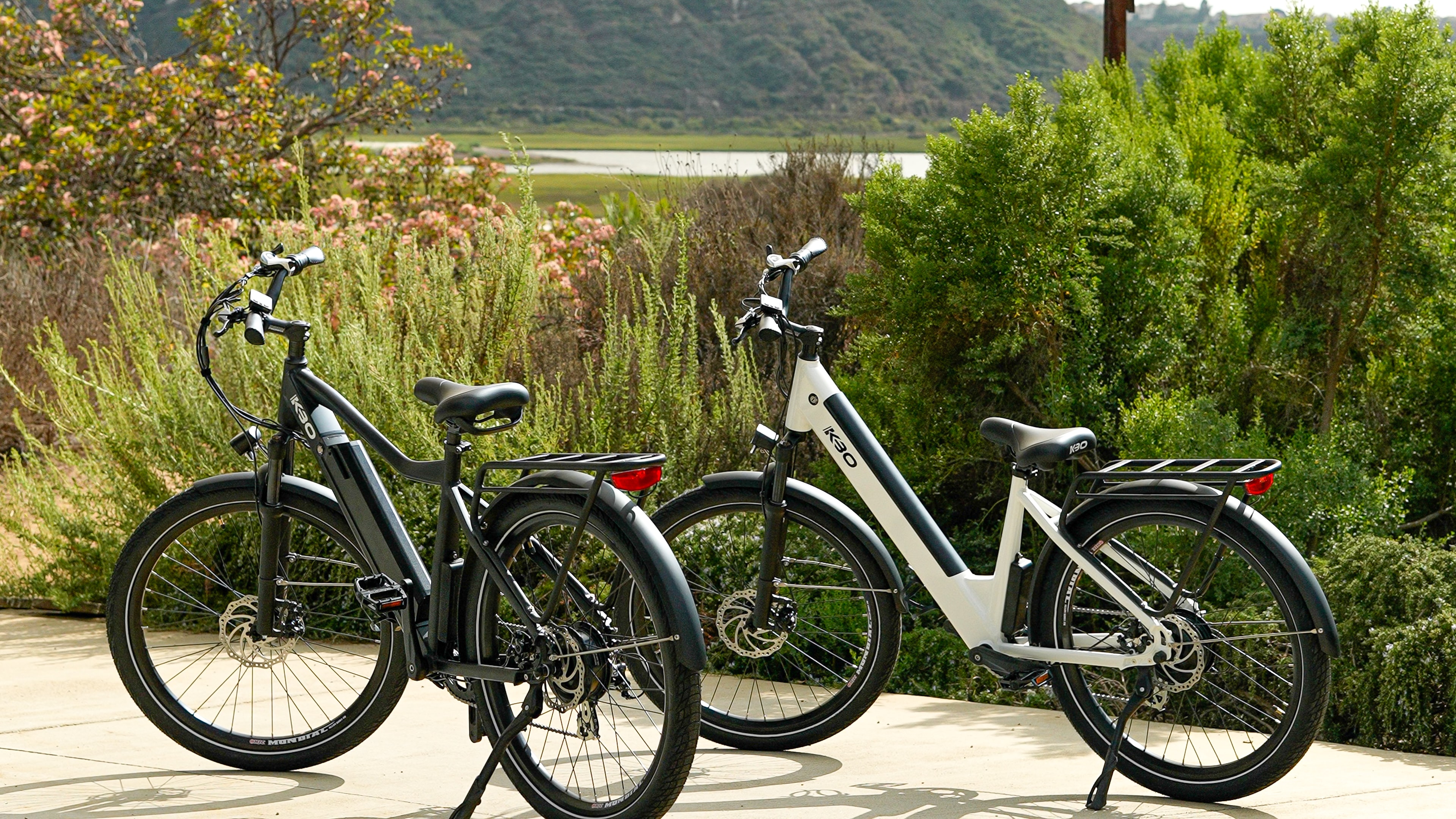
Measure the battery radius for your e-bike
Here is a guide on all things battery-related, plus check out our awesome battery radius calculator tool!
Watt is the most important thing about e-bike batteries? Read on to find this, and many other questions answered!
How much capacity do I need?
In general, the bigger the battery the better! With current technology, 400 to 500 Watt-hour (Wh) capacity batteries tend to be the most common as they provide a good balance between range, longevity and weight, which are three key factors that should be thought about.

Estimated range
83.4 km
1) Range
Do you want to travel long distances on your e-bike, or will you be using the motor assistance often - for example on hills or windy rides? Then a larger battery could definitely be a good option, especially if you don’t want the hassle of constantly charging their battery. If you are just looking to ride for less shorter distances without much motor support then a capacity of 200-400Wh would be more fitting for you.
2) Longevity
Bigger batteries not only last longer per charge, but are also more durable! This is because most batteries run over a certain number of charging cycles before their performance decreases. Therefore, if you have to charge your battery less then it will degrade at a slower rate. Replacing a battery can also be expensive, so you might have to pay more often to replace smaller batteries that don't last as long as larger ones.

Two e-bikes in the nature
3) Weight (on your bike and your wallet)
Having said this, the main drawbacks of larger batteries are that they can be more expensive to purchase in the first place and usually weigh more as they contain more storage cells. Therefore, if you might have to carry your bicycle or if you are on a tighter budget then a smaller battery could be more suitable for you.
Take a look at some of our second-hand e-bikes offered in Amsterdam!
So how much capacity do I actually need?
So, after assessing these factors, do you need a bigger or a smaller battery? For those looking to get a larger battery, then a capacity of 500Wh or more would be appropriate. Need even more charge? It can be possible to have a dual battery system where you have two batteries on your bike which allows for double the capacity! If you just need a little boost, then a battery with a capacity between 200 to 400 Wh would make more sense.
How quickly does a battery recharge?
In general, a lithium-ion battery (the standard type of battery used in e-bikes today) can take anywhere between 4 and 6 hours to fully charge from being empty. However, it usually takes 1.5-3 hours to reach approximately 80% charged. The majority of charging time is actually spent charging the last 10-20% of the battery capacity. This is known as the top off period where all the battery cells are at a usable capacity but they aren’t fully charged - so the charger replenishes them simultaneously but at a slower rate.
How can I optimise the recharge rate?
There are ways to maximise the charging efficiency. Though warmer conditions can improve charge times of batteries, if the temperature gets too hot then the fluid inside the battery which causes the chemical reactions to create electricity will start to evaporate and battery capacity decreases. Conversely, charging in cold conditions (especially below 0 degrees Celsius) can cause irreversible damage to the battery due to the internal components going through chemical reactions that slow down or even prevent the battery from functioning. Therefore, charging the battery between 10 to 30 degrees Celsius is considered the perfect range as it not only optimises the recharge rate but also avoids damage to the battery.
Another way to charge efficiently is dependent on the amperes. Using a charger with more amps will decrease the time to fully recharge a battery. For example if a 2-amp charger takes 6 hours to fully charge a battery, then a 4-amp charger will charge a battery approximately twice as fast so it would take only 3 hours! However, too many amps could negatively impact the battery so it is always best to see what the manufacturer recommends or supplies with the bike!
How long does a battery last on average?
As a guide, an e-bike battery could provide assistance in excess of 140km but the average is between 40-80km on a single charge, while lasting 2 to 5 years (or 500 to 1,000 charge cycles) before the battery capacity can be worn down to 60% of its capacity compared to when it was new. The range on a single charge is mainly based on battery capacity and the use of the electric assistance, while the lifetime of the battery depends on the quality of care and maintenance of the battery.
Getting the most out of a single charge
To maximise the range on a single charge, a battery with a larger capacity will definitely help! However, using the assistance efficiently - such as using the boost up hills or to accelerate up to speed - will decrease the battery consumption. E-bikes more frequently have an 'eco' mode where less boost provided is but the range is higher, which could overall be quicker for you to get from A to B - think about the tortoise and the hare! Tyre choice and riding surface is also important in reducing battery consumption: riding with narrow and smooth tyres on smooth roads has a much lower rolling resistance compared to wider, knobbly tyres riding off-road (in other words, it is easier to pedal with the first option).
Maximising the lifespan of your battery
To ensure your battery lasts for many years, avoid storing batteries in extreme temperatures, be mindful of potential water damage from rain and avoid knocking the battery or too many vibrations (such as if the battery is left on the bike while it is being transported by car) so the internal components are kept in good condition. Some manufacturers also give guarantees dependent on the number of charge cycles carried out, which can give an indication on how long they expect their batteries to last.
When should you charge your e-bike battery?
If you charge the battery when it is at 20-30% charge until the battery is full, then this will optimise the lifespan of the battery. Other charging habits, such as letting the battery run completely flat or charging it when it has only lost a small amount of charge, can reduce how long the battery will last.
Are second-hand e-bike batteries reliable?
As with everything that you buy second-hand, it is important to check batteries for wear and tear that may influence their performance. The issue with batteries is that externally it could look very well maintained and in pristine condition, yet internally the capacity could have deteriorated due to excessive use. Therefore, three key factors when considering reliability are the current capacity of the battery and the ease of replacing the battery in the future, plus the brand of the battery.
Checking the capacity of a used battery
This can be difficult to get a precise answer for without running detailed battery tests using specific tools. We go into more detail on this below. Some battery manufacturers, such as Bosch, have certified dealers which can accurately diagnose the state of the battery for you. Instead, you could check the e-bike’s cycle computer when the battery is fully charged to get an indication of the state of the battery - how many kilometres are on the odometer and what is the estimate of the range? Additionally, you could ask for an estimate of how often the previous owner would charge the battery and the age of the bike. Then, cross-reference this to the manufacturer’s stated guarantee of the battery to give an idea of the condition of the battery.
Replacing a second-hand battery
Though e-bike batteries can be reliable, researching how much a replacement battery costs and its availability is also a sensible idea when deciding to buy an e-bike with a second-hand battery. Some manufacturers like Shimano offer a 2-year warranty on their e-bike systems so this could be another factor to take into account when purchasing an e-bike. Batteries that are built in to the bike may have to be sent back to the manufacturer for them to replace for you, so it is important to check the viability of this process otherwise your e-bike could just become a regular bike!
Dependable battery brands
Brands are also important when looking at second-hand e-bike batteries. The e-bike market is still emerging as demand for these bikes rise; for example in Europe alone sales have increased by 500% between 2009 and 2018. Consequently, there has been much investment and innovation into battery technology, and now companies like Bosch, Shimano and eBikeMotion are accepted to be the most dependable battery manufacturers, so it could be wise to keep an eye out for these manufacturers when looking at second-hand batteries. However, many brands also opt to design their own batteries in-house, which can be just as reliable as the big names! Unbranded or worn looking batteries could be more unreliable or in the worst cases they can be outright dangerous, so it is important to have as much information about the battery as possible when buying a second-hand e-bike.
How do you measure battery capacity?
Battery capacity is measured in Wh and in order to measure this you will need to know the amperes (A) and voltage (V) of the battery. You can get accurate measurements of these readings with a multimeter. It works by connecting the black clip to the negative pole of the (fully charged) battery and the red clip to the positive pole of the battery (they should be marked with a '-' and a '+' respectively) and then simply registering the readings of the A and V on the multimeter.

Battery capacity multimeter
Once you have found out the A and V, you can use this basic formula to find out the capacity of your battery (and also take you back to physics class at school!):
A x V = Wh
Can I measure capacity another way?
Don't have a multimeter? You could take the battery to an e-bike specialist dealer or an electronics specialist to see if they can run this test for you! Or, for a rough estimate of current capacity you could see how far the e-bike will go on a full charge using the most boost on a flat road and then comparing this distance to what the manufacturer originally specified as the range. For example, if the manufacturer originally said their e-bike can go 40km on one charge of a 400Wh battery, but when you try this test you only go 30km. Then you can see that the range has decreased by 25% since it was new and therefore the battery capacity will have also decreased by roughly 25%, meaning that now the battery would have around a 300Wh capacity .
How can I measure the radius of an e-bike battery?
We have made a handy tool that can give you a good estimate of what your range would be depending on characteristics about you, your bike and your e-bike habits!
There are many variables that influence the battery radius and so the more you can work out the more accurate the calculation will be! You can find this tool here.
MORE ARTICLES:
The Ultimate Guide for Buying an E-Bike
E-bikes: are they really sustainable?
Bike locks: How do I choose the right one?! The ultimate guide.



